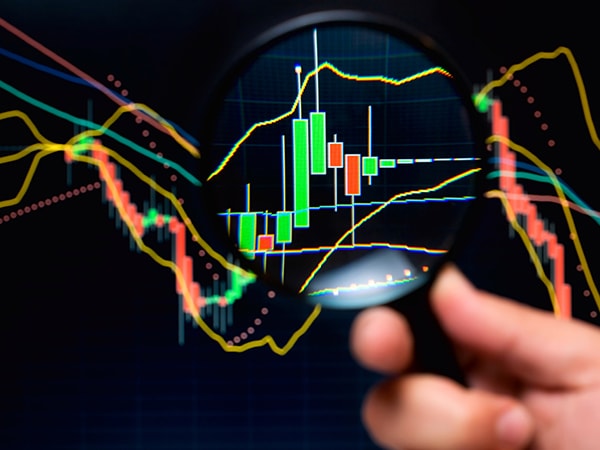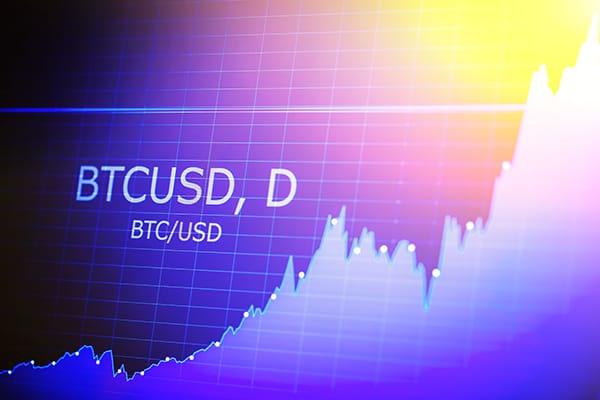You’ve probably heard about the day trading option available in different financial markets, from Forex and stocks to commodities, CFDs, and more.
In recent years, there’s been an increased interest in day trading crypto because cryptocurrencies are a volatile asset class (and day traders need volatility to profit), the Cryptocurrency market is open 24/7, and the commission fees are very low compared to trading stocks.
But how do day traders actually trade cryptocurrencies? How does one start and what strategies should one learn?
In this How to Day Trade Cryptocurrency guide, you’ll find the answers to these questions, and more!

Should You Engage in Day Trading Cryptocurrency?
Day trading refers to the process of speculating on the price of a financial instrument or asset during the course of a single day (hence the second term “intraday trading”). Day trading cryptocurrency, then, involves entering and exiting positions or buying and selling crypto assets, within the same day to make a profit.
The reason why day trading is so attractive for traders is that it allows them to capitalize on short-term price fluctuations. To achieve this, they need to stay alert to any market movements and place a number of orders to increase their chances of making a profit. For some traders, day trading is only a one-time thing while others perform it on a regular basis.
The idea is to take advantage of the crypto market volatility and successfully sell an asset for a higher price than the one you bought it for. For instance, you’ve just read that a newly-released video game will charge its players in Litecoins (LTC) for character upgrades. You immediately purchase a couple of LTC yourself because as an experienced trader, you know that the increased Litecoin demand will drive its price up, allowing you to sell your assets and make a small, quick profit.
How to Get Started with Day Trading
Choose a Cryptocurrency (Bitcoin, Ethereum, or an Altcoin)
For day trading, it’s important to choose a reliable cryptocurrency, one with high trading volumes and liquidity because these assets are easily bought and sold/exchanged for cash.
The higher the number of market participants, the more stable the asset. By stable, we understand a cryptocurrency that’s volatile but with more or less predictable and recurring price patterns. If you choose such an asset, the risks will be significantly lower and it will be easier to make short-term trading decisions.
Therefore, many traders turn to high-liquidity cryptocurrencies such as Bitcoin (BTC), Ethereum (ETH), Bitcoin Cash (BCH), and Litecoin (LTC). For illustration, Bitcoin alone has between 200-300 billion US dollars in trading volume.

If you’re interested in altcoins, we suggest you do a thorough research when dealing with some lesser-known coins because they are liable to pump and dump schemes and undervaluation.
Learn How to Execute Market, Limit, and Stop-Loss Orders
There are three basic order types that every day trader should know how and when to use if they want to manage the risks of day trading: market, limit, and stop-loss order.
A market order is when you buy or sell your assets for their current market price without locking it so as to act immediately in a volatile market. This is useful when prices are rapidly changing and you need to enter or exit your position there and then.
A limit order gets executed when the asset reaches your predetermined buying or selling price limit and continues to move in a favorable direction. This means that some platforms let you set a lower buying limit than the asset’s current market price.
A stop-loss order is another type of order that helps you reduce your losses. What you do is set a stop-loss order for a price slightly below the purchase price. In case the price of your asset starts falling, the stop-loss order gets activated and turns into a market order, meaning you sell the assets at the next price available.

Stick to Your Trading Plan
It’s crucial to create a detailed trading plan before getting involved in cryptocurrency day trading. Of course, you might have to test and adjust your plan as you go, but the important thing is to discipline yourself and avoid making any impulsive purchases, trades, and orders. Risk management is a skill worth developing for anyone interested in a volatile asset class such as cryptocurrencies.
Recommended: Learn Technical Analysis
Although optional, crypto enthusiasts who intend to get really serious about day trading should learn how to work with technical analysis as well. Technical analysis or charting takes into account both historical price action and complex technical indicators such as MACD (Moving Average Convergence Divergence), On-Balance-Volume, Average Directional Index, etc, to predict future market movements by presupposing and identifying recurring market trends. This method is definitely not beginner-friendly.

Day Trading Strategies
Let’s take a look at three very popular day trading strategies to give you an idea of how to include them in your trades.
Scalping
Scalping is a trading strategy that involves making a profit from small price movements (e.g. a bid-ask spread) in a very short period of time. To make the most out of these minor price moves, “scalpers” place many large-scale orders over and over again within the course of a day. A successful scalping strategy typically involves the use of technical analysis and stop-loss orders and can be combined with margin and futures.
Range Trading
Range trading is another strategy popular with cryptocurrency day traders that relies on candlestick chart analysis and takes into account the support and resistance levels of a crypto asset whose price trades between two boundaries (high and low). Typically, the trader would buy at support and sell at resistance.
Trading Bots
Although not a trading strategy per se, cryptocurrency trading bots are gaining more and more traction among crypto day traders. Instead of spending the whole day in front of a computer screen due to FOMO (fear of missing out), trading algorithms can take over your job and make your anxiety go away. Trading bots operate 24/7 and are much faster at placing multiple orders in a short period of time. On top of that, they’re perfect for new traders who can choose ready-made strategies for their bots.
Disclaimer: Although cryptocurrency trading bots have their advantages, we advise traders to do their own research and make sure they’re using trustworthy software. The crypto industry is full of scam platforms that might trick traders into investing with their automated bots only to steal their money and data afterward.

Conclusion
We hope this How to Day Trade Cryptocurrency guide will help you get a leg-up on the crypto market and encourage you to begin day trading cryptocurrency. Although this trading strategy can at times be stressful and demanding, it might prove profitable for experienced traders.
However, we shouldn’t overlook the substantial risks of day trading as well. As long as you conduct your research in advance, carefully follow real-time crypto news and market movements while trading, and promise not to spend more than you can afford to lose, you’re on the right track.

